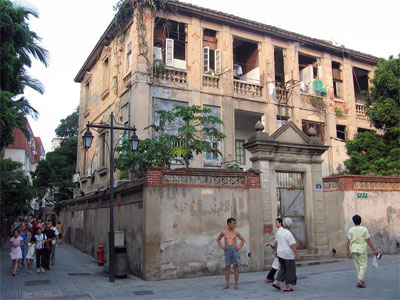Gulangyu Island is renowned for its natural beauty, and is referred to as the "Garden on the Sea". The island covers and area of 1.8 kilometers, and has a population of around 20,000. Gulangyu island is only a 10 minute ferry rid from the southwest side of Xiamen City. In the 1842 Treaty of Nanking, Britain made Xiamen and Gulangyu one of its treaty ports, and you will see many western-style houses, churches, and other buildings. Gulangyu island is ranked one of the top ten most scenic spots of Fujian Province.
Gulangyu Islet was originally named the "Yuanshazhou Island" during the Ming Dynasty. The name of the island in Chinese mean "Drum Waves", which comes from the sound of waves hitting the reefs. The word "Yu" means Islet, so altogether, Gulangyu means "Drum Waves Islet".
Gulangyu island is a place that hosts residence for westerners during Xiamen's colonial past. Other than its scenic beauty and architecture, Gulangyu is also known as the "Island of Music" or "Piano Island" or "Town of Pianos". One of the most imposing colonial architecture is the Xiamen Museum, which houses more than 1,000 exhibits.

During the Ming Dynasty, the troops of Zheng Chenggong were stationed here, and after the Opium War in 1842, western countries had made establishments on the island. Gulangyu was occupied by the Japanese during World War II, and was returned to China at the end of the war.
The 20,000 residents of Gulangyu Island enjoy a fantastic and relaxing lifestyle. The island is free from most motor vehicles, and only electric powered vehicles are allowed on the island so that it is free from noise and pollution. Strolling around the island, you may even hear melodic sounds of pianos.
One of the tour attractions on Gulangyu is the Ruins of Zheng Chenggong's Barracks, and also the platform on which he viewed his navy fleet. Other scenic spots on the islet include the Sunlight Rock and the Shuzhuang Garden.
|